Sightseeing in Ladakh
SANKAR GOMPA & VILLAGE: A relatively modern monastery, it is closely associated with the Spituk monastery and served as the residence of the late head priest-Kushak Bakula. A number of gold icons are to be found here.

SHANTI STUPA (Japanese Peace Pagoda) : Shanti Stupa/Japanese peace pagoda is build by a
Japanese religious organization headed by Head monk Nakamura with the help from the organization and local people. It is situated at a hill top in Cahngspa village providing a bird eye view of the Leh town and the surrounding mountain peaks. Architecturally it has the Japanese touch with small clean rooms on the side for meditators and the main Japanese shrine at the entrance.
Namgyal Tsemo:King Gragspa Bum-Lde built the “Red Gonpa” known as Tsemo Gonpa in 1430 AD. The monument has three-storied Maitriya Buddha's statue and a one-storied statue of Avaloketesvara and Manjushri. The Tsemo Sungbum Chenmo (sacred text) was written in gold and silver, Tisuru Stupa consist of 108 temples, which were remarkable works done in the reign of king Graspa-Bum-Lde.
leh palace : The Namgyal Tsemo (victory Peak) was build by King Tashi Namgyal after the reunification of upper and lower Ladakh and victory over Hor and their bodies are placed under an image of Mahakala, the guardian deities to stop further invasion of Hor. The Leh palace known as 'Lechen Palkhar' was built by Singay Namgyal around in the beginning of 17th Century A.D. The nine-storied palace is now deserted, and the ASI (Archeological Survey Of India) has taken up the renovation work.
SPITUK GOMPA: 8 Kms from Leh, it stands prominently on the top of hillock commanding a panoramic view of the Indus Valley for miles. Many icons of Buddha and fine Thankas are to be found in this 15th century Gompa. The Gompa also houses a collection of ancient masks, antique arms, and an awe-inspiring image of Mahakaal. The face of the Kali image is kept covered and is revealed only at the annual function at January every year.
PHYANG GOMPA: 17 Kms from Leh on the Leh-Kargil road, it looks like a huge palace from afar, build by Tashi Namgyal in the later half of the 16th century AD, it belongs to the Red Cap sect of Buddhists. Hundreds of icon of Buddha and other gods are kept on wooden shelves.
SHEY PALACE AND GOMPA: Situated on a hillock 15 Kms upstream from Leh, it was once the residence of the royal family. According to tradition, it was the seat of power of the pre-Tibetan kinds. A 7.5 mts high copper statue of Buddha, plated with gold and the largest of its kind, is installed here.
THIKSEY GOMPA: 19 Kms from Leh, spectacularly sited, Thiksey is one of the largest and architecturally most impressive Gompas. There are several temples in this Gompas, containing images, stupas and wall paintings of Buddha, which are exquisite.

HEMIS GOMPA: 40 Kms from Leh, it is the wealthiest, best known and biggest Gompa of Ladakh. Its popularity stems from the major annual festival held here in summer. The festival is in honor of Guru Padma Sambhava’s birth anniversary. It also has the largest Thanka in Ladakh which is unfurled once in 12 years (nest in 2004) Hemis was built in 1630 during the reign of Singge Namgyal, an illustrious ruler of Ladakh. It flourished under the Namgyal Dynasty for the royalty favored the Drugpa sect, which is managed the monastery. It is divided into two, the assembly hall on the right and the main temple on the left. The hall (Dukhang) is also used as “green room” by the dancers during the festival. The temple is known as Tshogkhang. The verandahs have a surfeit of frescoes, among them the Buddhist “Wheel Of Life” (Kalachakra) and the lords of the four quarters, besides the prayer wheel.
TAKTHOK GOMPA: The Takthok (the monastery with rock ceiling); 50km. east of Leh, this is the only monastery belonging to the Nyingmapa school of order. The monastery came into existence when Guru Padma Sambhava visited this place and blessed it in the 8th century. The Gonpa was merely a meditation cave of Padma Sambhava, with footprints and many other signs, until the reign of King Tsewang Namgail. When Mahasiddha Kunga Phunstog introduced monastic community. It was given the name of Takthok Padmalinggon. The Takthok Festival is held in the month of July or August.
CHEMREY GOMPA: 45 Kms from Leh, situated in the picturesque valley leading to Changla, the Gompa was constructed as a funeral act of merit on Singge Namgyal’s death in 1645. A large collection of scriptures with title pages in sterling silver and the text in gold letters is kept here. Close by a cave monastery reputed to have been the abode of Padma Sambhava during one of his periods of meditation.
STAKANA GOMPA : Stakna Gompa of Ladakh is situated on the right bank of the Indus River, at a distance of approximately 25 km from the town of Leh. The name, 'Stakna' literally means 'tiger's nose'. The monastery was so named because it was built on a hill, which is shaped just like a tiger's nose. Stakna Monastery of Leh Ladakh owes its inception to Chosje Jamyang Palkar, the great scholar saint of Bhutan. It formed a part of the many religious estates offered by the Dharmaraja Jamyang Namgial to the saint, around 1580 AD.

STOK PALACE & MUSEUM: The palace of the banished royal family, Stok has a museum which displays fabulous period costumes and jewelry of the royalty along with exquisite Thankas representing the life style of Shakya Muni. Interesting historical objects like coins, armor, weapons, precious jades and porcelain too can be seen here.
MATHO GOMPA: Situated on the opposite bank of the Indus across Thiksey, Matho was established in the first half of the 16th century AD and has valuable collection of very old and beautiful Thankas, some in the form of Mandalas. Its annual festival of Oracles in early March is an important event in Ladakhi religious calendar. Young monks selected as oracles undergo long period of meditation, fasting and ritual purification to gain spiritual strength. When possessed they perform astonishing feats with swords and knives, cavorting blindfolded along narrow parapets.
MAHBODHI INTERNATIONAL MEDITATION CENTRE: The MIMC was founded by Bhikkhu Sanghasena with a single rented room in Cahngspa village. Today MIMC has 21 Guestrooms with attached bath, two dormitories and a comfortable, private suite for visiting teachers. MIMC with the effort of Bhikkhu Sanghasena and generous donors has a huge charity hospital, School, one of the best hostel in Ladakh and an old age home for the destitute.
BASGO GOMPA: 40 Kms downstream from Leh, it was the seat of power of branch of a Namgyal family. It was here in 1680 that invading Mongol and Tibetan armies were held in check over a three year old siege. Original 16th century murals and other arts at Basgo are well worth a visit.
ALCHI GOMPA: 70 Kms from Leh, on the banks of the Indus, is the Alchi Gompa dating a thousand years back. One of its walls features thousands of miniature sized pictures of the Buddha. Three large sized images made of clay and painted brightly are its focal attractions. No longer an active religious center, it is looked after by monks from the Liker monastery. This is the only monastery amongst 34 monasteries, which is not located on a hilltop.
LIKIR GOMPA: Founded in the 11th century and rededicated to a different monastic order in the 15th century, its earlier Gompa was destroyed in a fire. The present Gompa dated back to the 18th century. Skilled craftsmen producing excellent Thankas, earthen pots and carved wooden folding stools, live here in the village. Majestically situated, Likir commands a spectacular view. A magnificent giant Jupiter tree, one of the few survivors of its species, stands in the courtyard.
LAMAYURU GOMPA: The oldest holy site in Ladakh, it was a bon shrine prior to the advent of Buddhism. Also known as Yung Drung (Swastika) it is sited on a high promontory overlooking the village and valley. For sheer spectacle value no other Gompa can match Lamayuru.
RIDZONG GOMPA: Rizong is the most isolated monastery of all the monastery of Ladakh. There is no entry fee in this monastery, you can offer whatever you can. Rizong Gompa is known as the paradise for Meditation. Guru Padma Sambhava is believed to meditated here for years. One can still find the small caves where Lamas used to meditate for years cutting themselves from the rest of the world except for an one feet square outlet window from where they accept the one time meal of the day.
CHULICHAN: Chulichan, the nunnery is around one and half Kms. Below the Rizong monastery; around 20 Nuns resides at Chulichan. They provide food and cloths to the monks and perform morning and evening prayers.
VILLAGE OF MANGYU: The most beautiful village of Ladakh lies off the Leh-Srinagar Highway into the mountains at an altitude of 13860 Ft. This petit village has few houses and nearest accommodation is at Uleytokpo and Alchi. The village is approachable by walk from the Mangyu bridge.
MULBEKH GOMPA: Precariously perched a top of a 200 Mts. high crag, it has an imposing rock-carving of Chamba, the future Buddha. On the other end of the valley is a large vertical phallus shaped rock with a monastery at its base.
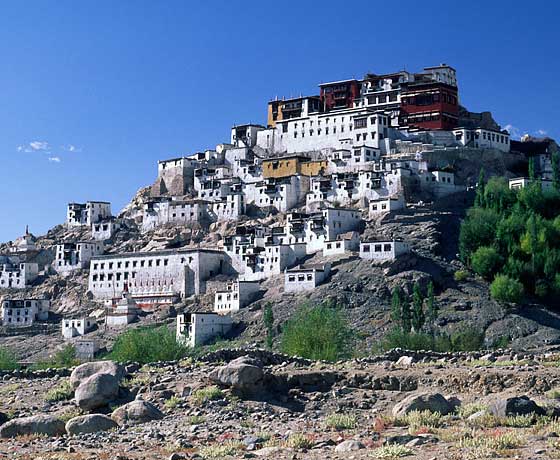
ZOJILA PASS: Zojila is one of the high motorable pass at an altitude of 3505 meters. Zojila is on Leh-Srinagar highway, 127 Kms from Srinagar and 307 Kms from Leh built by Indian Army. Zojila pass closes during the winter due to heavy snowfall and cleared every summer for passage of Army and civil vehicles.
DRAS: It is the first major village on the route Kashmir to Kargil, inhabited by a population of mixed Kashmiri and Dard origins, has the local reputation of being the second coldest permanently inhabited spot in the world. But in summer when the pass is open and the tourist are going through, the standing crops and clumps of willow give it a gentle, smiling look.
KARGIL: It is the second town of Ladakh situated on the Suru river just short of its confluence with the Dras-Shingo. Almost equidistant, at a little over 200 Kms from Leh, Srinagar, Padum in Zanskar and Skardu, the capital of Baltistan, it was in the old days the Centre of a network of routes joining these places. Since partition, Skardu has been lost to Ladakh, but Kargil remains the main staging-pint between Srinagar and Leh, and the gateway to the Suru Valley and Zanskar.
PADUM: Padum is 464 Kms. From Leh and 234 Kms away from Kargil. Once the capital of the Kingdom of Zanskar valley, today it is the administrative headquarter of the region and probably the most populace settlement of barren Zanskar region. There is a tiny market along the main road. The town has a newly constructed Mosque. Stakriko Gompa is on a hill side and the 10th century monument carved on a huge rock near the river bank provides epigraphic evidence that the region was influenced by Buddhism since ancient period.
KARSHA GOMPA: The Karsha monastery is situated on a steep mountain overlooking the Padum valley. It is around 9 Kms from Padum across the river and it takes around 02 hours by walk to reach Karsha. Karsha Gompa was founded by a translator Fagspa Sherab from Zanskar and later taken care by Dorjey Sherab and Sherab Zangpo of Stod. At present it is the largest Gelukpa monastery in Zanskar region. Around 90 monks are in residence.
STONGDEY GOMPA: Stongdey Gompa lies on a hilltop around 10 Kms. To the north of Padum on the way to Angla. It takes around 03 hours by walk. Stongdey Marpaling is derived from its founders name Marpa. The monastery belongs to the Gelukpa order. At present around 60 monks are in residence.
PHUKTAL GOMPA: The Phuktal monastery is picturesquely st on a mountain that looks like a bird’s nest. It is situated on the west of Padum. This Gompa was founded by Phagspa Sherab, later a monastic community was introduced. The Phuktal Festival takes place on the 18th and 19th days of the 12th month of Tibetan calendar.
BARDAN GOMPA: The monastery is situated on a huge rock overlooking the Lingti River to the south of Padum, on the Lamayuru Darcha trekking route. The Compa was founded by Dewa Gyatso in the 17th century AD. Bardan Gompa is a branch of the Stakna monastery. Around 40 monks are in residence here.
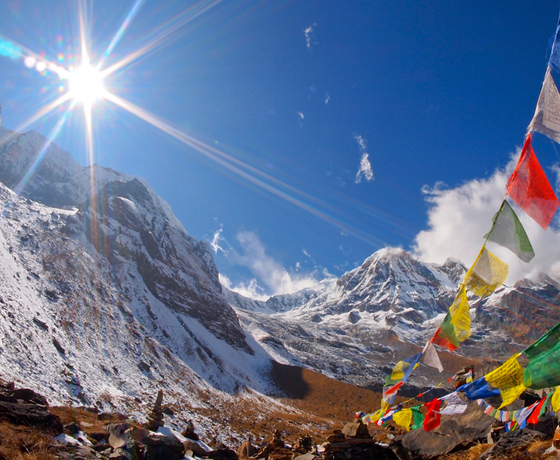
DHA-BEMA: (The twin village of the Aryans): This village is famous for its people and are called the Drokpas (The pasture people), settled in the lower Indus valley are the descendants of “Aryans”. They are Buddhist but also worship the nature Cods and Spirits as well as Dah & Tseringma protectors. Their tutelary Gods perhaps the most unique feature is their revulsion for Cows, Onions and Water, they believe bathing will drive their Gods away. Dha is 162 Kms, and Bema is 158 Kms from Leh. This villages been opened in recent years for the tourist and has been the study field for Anthropologist, Photographers and Historians of the world.
TIBETAN HANDICRAFT CENTER: The center is about 12 Kms from Leh. It is a segment of the Tibetan SOS village settlement. One can see the Tibetan carpet weaving factory and various handicraft items made by Tibetan women.
khardungla pass: The road journey to Nubra valley leads through Khardung La pass (The highest Motorable road in the world) 18,390 ft. around 39 Kms. Away from Leh. There are two checkpoints on the both sides of the pass. Khardong is the first village of Nubra valley at higher altitude than Deskit and other villages.
DESKIT village: Deskit is the main village of headquarter of Nubra valley, which has a small market consisting of a row of shops and about 500 years old Gompa on the hilltop. Spectacular view of the valley can be seen form the monastery.
DESKIT GOMPA: Deskit Gompa was founded by Lama Sherab Zangpo of Stod in about 1420 AD during the reign of King Dragspa. About 100 monks are residing in the Gompa, which is a branch of Thikse Monastery. The monastic festival called Gustor takes place on 20th and 21st days of the 12th month of Tibetan calendar.
hundar village: Hundar is a beautiful village to stay with lot of trees and you will really enjoy your stay at Hundar. It has a small monastery and ruined fort above the village. The walk or Camel Safari (Double Hump bacterian camels) from Hundar to Deskit, through sand dunes for two hours is wonderful.
Samstanling gompa: Samstanling Monastery was founded by Lama Tsultrim Nima and Monastic community was introduced as Rezong Gompa. About 50-60 monks are residing at this 132 years old monastery. The Gompa has some strict rules and regulations.
- Women are not allowed in the monastery after sunset and before sunrise.
- No smoking is allowed (not even bringing cigarettes packets) in the monastery.
- Alcohol and non-veg. Food are strictly prohibited.
- Do not enter in sleeveless shirts and Pants.
PANAMIK: Panamik was major stopover for ancient Silk route caravan before crossing the mountains of Karakoram and Ka-lu, as there were no villages in further journey for 12 days, Panamik is famous for hot spring, Insa Gonpa and near by small beautiful Lobonestso (small Lake).
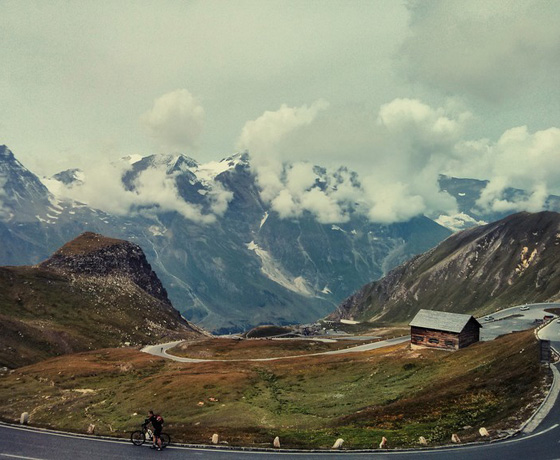
KHALSAR: Khalsar is an hour drive from Khardong village. The Shayok river and Tsati village are visible from here. Khalsar village is the finishing point for Sakti-Khalsar trek. The village is about 95 Kms. From Leh, 21 Kms from Sumur village and is situated at an altitute of 10,000 ft. above sea level.
LADAKH FESTIVAL: Every village has a festival in Ladakh, when all the people gather for a gala time. Singing, Dancing and partying for whole nights and days. Archery is one of the favorite game when the men of the village show their skill and compete. Ladakh Festival used to held in Leh every year under the mountain trail of the Leh Palace. Recently Ladakh has introduced the festival for tourist and held every 1st to 15th September and became a symbolic festival where every part of Ladakh is represented in their traditional best. Group of artiste from as far as Changthang, Nubra, Zanskar, and Dha Hanu gather at the show to perform. The department of tourism has further decided recently to expand the radius of this celebration and assigned different spot villages for different day and thus whole Ladakh participate in it. Apart from folk song and dance, life-style, traditional marriage and religious ceremonies are also displayed. The first grand day of the festival held in Leh and rest in respective villages.
SINDHU GHAT: The Sindhu Ghat at Choglamsar village at the bank of River Indus has been inaugurated on the 1st of June 2001 by Hon’ble Minister for Home Shri L. K. Advani. Every year Sindhu festival is held on this bank of river, forges bonds of unity between communities. The festival is an ideal opportunity for travelers from all over the country and the world to visit this wonderful region and to savour its rugged beauty and charm.
LADAKH HALL OF FAME: The Hall of Fame is a glorious museum constructed by the Indian Army. It is worth a visit for every citizen. You can see the memorabilia, eminent defense personalities with biographies, images and weapons used during the Kargil and other key strategic battles fought in Ladakh. And belongings of the enemy soldiers found at war site. All the martyr and the gallantry awards…
“Here’s something that you will be proud of our defense personnel who sacrificed themselves so that we could live in peace.”
GURDWARA SHRI PATTHAR SAHIB: The Shrine known as Gurdwara Patthar sahib is situated about 25 kms. Short of Leh town on the Leh-Srinagar road. Built in the everlasting memory of Shri Guru Nanak Deve Ji the great prophet who sanctified the place by his sacred visit during the year 1517 while on his second missionary tour (2nd Udassi 1515-1518). The Guru reached here via Nepal, Sikkim, Tibet Yarkand and Leh after having spiritual discourses with the sidhas at Mount Sumer (Central Himalayas). On the hill features across the road, there used to live a wicked demon that terrorized the people of the area. Their miseries multiplied day by day. As their miseries became unbearable they prayed for divine help. It is said that the Great Guru heard their woes and came to their rescue. The Guru settled down on the bank of the river flowing nearby. The people sought for help and the Guru blessed the people and became very popular in the area. The locals called him as Nanak Lama. The Demon got enraged and started making plans to kill Guru Nanak. One morning, when the Guru was sitting in meditation, he rolled down a big boulder from the hilltop with the aim of killing the Guru. But on the very touch of Guru’s body, the solid rock melted like wax and Guru’s back got embedded on it like a cushion. The Guru kept on sitting in meditation undisturbed. Thinking that the Guru must have been killed, the demon came down but was taken aback on seeing the Guru in meditation, undisturbed. With a rage of anger he tried to push the rock with his right foot but the rock had already became like wax his foot also got embedded into it. On this , he realized his folly and powerlessness as compared to the spiritual power of the Great Guru. He fell on the feet of Guru and humbly prayed to be pardoned. The Guru advised him to get rid of his wickedness and lead the life of a nobel person, in the service of humanity. This changed the life style of demon and he started serving the people. The Guru there after continued his Holy journey towards Srinagar and Kashmir via Kargil.
The boulder having imprint of the Guru’s back is lying in the Gurdwara to this day.
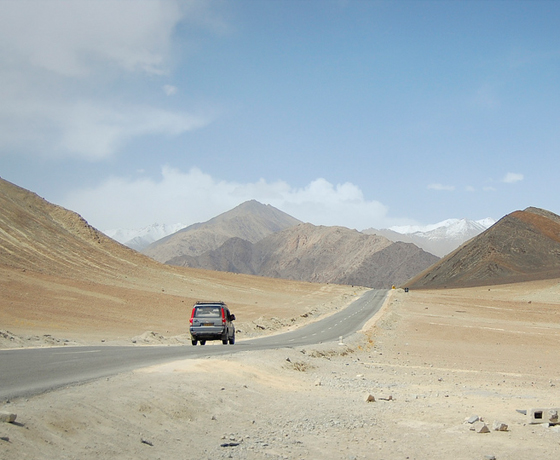
MAGNETIC HILL: Defying the Law of gravity. This place is close to the Gurdwara Shri Patthar Sahib. It has been noticed that when a vehicle is parked on neutral gear on this metallic road the vehicle slides up-hill that’s the Believe it or not of Ladakh!
CONFLENCE OF THE ZANSKAR & INDUS: On way to Sham Valley before Nimu village one can have this magnificent view of two rivers in wed-lock! In seasons they have different colors and flow and wildness.
THE PANGONG LAKE: This route takes the visitor past the picturesque villages of Shey and Thikse, and turns off the Indus valley by the side valley of Chemrey and Sakti. The Ladakh rang is crossed by the Chang-la (18,000 feet / 5,475 M) which despite its great elevation is one of the easier passes, remaining open for much of the year even in winter, apart from periods of actual snowfall. Tangse, just beyond the foot of the pass, has an ancient temple.
But the main attraction of this circuit is the Pangong Lake, situated at 14,000 feet (4,267 M). A long narrow basin of inland drainage, hardly six to seven kilometers at its widest point to which foreigners are permitted, is only some seven km along the southern shore from the head of the lake, but it affords spectacular views of the mountains of the Changchenmo range to the north, their reflection shimmering in the ever-changing blues and greens of the lakes brackish water. Above Spangmik are the glacier and snow-capped peaks of the Pangong range.
Spangmik and a scattering of other tiny villages along the lakes southern shore are the summer homes of a scanty population of Chang-pa the nomadic herds’ people of Tibet and south east Ladakh. The Pangong Chang-pa cultivates sparse crops of barley and peas in summer. It is in winter that they unfold their tents (Rebo) and take their flocks of sheep and pashmina goats out to the distant pastures.
MANALI TO LEH SAFARI:This is an adventurous Jeep safari through the trans-Himalayan rage of mountains (similar to Tibet) passes over two high passes. You can see the different rock formations and changing colors of the mountains. First day we drive from Manali to Sarchu ( Alt: 10362 fts) over the Rohtang pass (Alt: 11550 Fts). We camp at the seasonal camp of Sarchu in tented accommodation. Second day we drive from Sarchu to Leh(251 Kms/ 07-08 hrs) over the second highest motorable road in the world over the high pass of Taglang-la(Alt: 17467 Fts.).
SECMOL: Secmol is a voluntary organization of the concerned youth of Ladakh. It was founded in 1988 by some returning university students who understood the problems of the younger generation with modern education, their lack of focus and the cultural confusion.
Their activities includes occasional courses and interaction with village student to help and inspire them at school, and awaken them to the problems stemmed from the inappropriate and insensitive schooling, preserve and strengthen their wisdom, cultural heritage and the unique identity of this land and its people.
“Operation New Hope was stated in 1994 to overhaul the primary education system in the government school of Ladaqkh. The ONH monvement has three arms woking together, the government, NGO’S and the village communities.
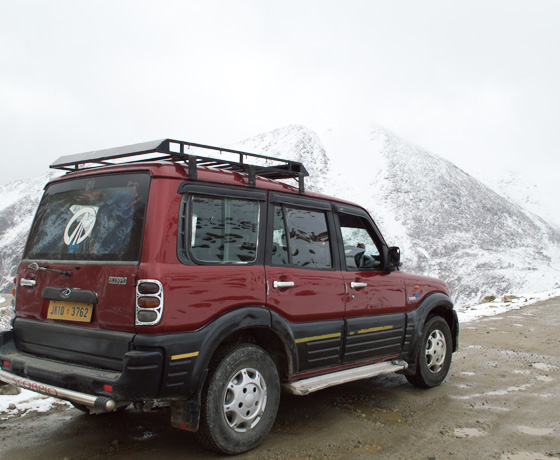
LEH MOSQUE: The Jama Masjid of Leh was built in 1666-67 AD under an agreement between Mughal Emperor Aurangzeb and Ladakhi ruler Deldan Namgyal. Initialy, the architecture of the mosque bore Tibetan, Central Asian and Ladakhi style. In recent years it has been reconstructed and given a new look with minarets and domes.
Jokhang: the Ladakh Buddhist Association in 1957 built the small Gonpa opposite to SBI and known as Jokhang in the main bazaar, which is open throughout the day for visitors. The Gonpa contains statue of Joyo Rinpoche (crowned Buddha).
Ladakh Ecological Development Group: LEDeG was founded by Helena Norberg-Hodge, a linguist from Sweden, is the founder of The Ladakh Project in India, an international non-profit organization concerned with the search for more sustainable ways of living in both the developed and developing parts of the world. LEDeG promotes ecological issues, organic farming, solar energy, cottage industries, and publishes books. They show an interesting video, Ancient Futures: Learning from Ladakh, daily except Sunday, if there are at least ten people in attendance. It has a popular library and a good handicraft shop. This place is a five-minute walk north of the main bazaar, next to the Tsemo-La Hotel.
The Women's Alliance of Ladakh: As in other parts of the world, the new economic pressures in Ladakh have marginalised women, who tend to be left behind on the farm as men and young people flock to the city in search of jobs and schooling. Women's decision-making power decreases while their work load increases.
In 1994, ISEC helped to establish the Women's Alliance of Ladakh (WAL), with the twin goals of raising the status of rural women and strengthening local culture and agriculture. Since then, WAL's membership has swelled to over 4,000 women from almost 100 different villages.
The Alliance's work covers a wide range:
Annual festivals celebrating local knowledge and skills, including traditional spinning, weaving and dyeing and the preparation of indigenous food.
Regular 'clean-up' campaigns aimed at encouraging community responsibility for the environment. (In 1998, WAL succeeded in banning the use of plastic bags.)
Programmes - like their successful 'No TV' weeks - aimed at resisting the worst elements of non-Ladakhi culture
Leh Nutrition Project
Leh Nutrition Project was founded in 1978 with the initiative of Save The Children Funk UK, and have been actively engaged in the most neglected isolated and remote areas of Leh district in rural development, primary health care, education agriculture, handicraft and so on.
LNP has now shifted its mission from service provider to an enabler organization. However it is actively working on watershed project in 25 villages. Child development, pre school education, health education and nature conservation are its focus areas.
SOUVENIRS & SHOPPING IN LEH: In Leh you can buy Pashmina Shawl, Handicraft Items such as Tibetan or Kahsmiri carpets, wall paintings, wooden masks, Ladakhi wooden table carved and painted, wooden dragons for wall hangings etc. You may also want to buy Tibetan and Ladakhi artifacts from the Tibetan market or antique shops. One can buy local apricot Jam or dry apricots. You can bargain in shopping up to 20% depending on the item and the shop. It is not advisable to buy electronic items as they are more cheaper in Delhi. Do not buy any old Thanka paintings or Statue as they might be fake and are not allowed to take out of Ladakh.
ORACL OF SABU: The Oracle of Sabu known as Ayu Lamo is famous for her healing and prediction. Every day the Ayu Lamo goes into trans to perform this. People from all the religion and cast from different profession visits her for consoling. She was one of the India’s first women to join the World Oracle Conference in Europe.
LADAKHI HOUSE: A typical Ladakhi house is made of mud bricks. The center of the room is the kitchen cum guest room. Sitting are like that of Japanese thus by using low tables and Tibetan carpets where one sits in a meditation posture crossed leg. Ground floor is used during the winters called “Goontsa” and the top floors are used during summer. A visit to a Ladakhi house gives chance to directly interect with local and inside into custom. You can try “Chang” the local bear or salt tea. You may like to dress and photographed in traditional Ladakhi dress.
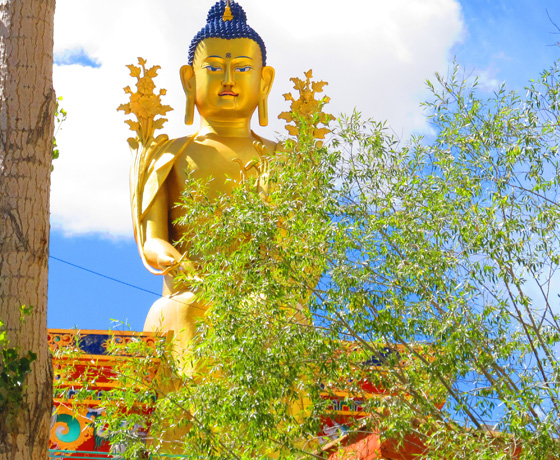
BUDDHA PURNIMA (BUDDHA JAYANTI) :This festival which falls on the full moon day, commemorates the birth of Lord Buddha . Also it was on this day Lord Buddha achieved Nirvana or the extinction of self and freedom from the cycle of rebirth. This day in Leh people from all over Ladakh gathers at Jokhang. This day relics and statues of Lord Buddha from monasteries are taken out and carried by individuals on their head and make a huge circumambulate right from Leh bazaar crossing over the Leh palace and back.
TSOMORIRI LAKE: The area traversed by the Manali Leh road, and containing the drainage basins of Tsomoriri and other lakes is known as Rupshu. Here, the Zanskar range is transformed into bare rolling many-hued hills divided by open high altitude valleys scoured by dust-devils. It is a landscape quite unlike any other in Ladakh- or elsewhere in India.
The first circuit follows the Manali road over the Taglang-la as far as Debring, a Chang-pa camping place. From here it strikes off east on a rough track across the basin of the twin lakes Startsapuk-Tso (Fresh water) and the Tso-kar (Salt Water), over the Polokangka-la (About 16,500 feet / 5030 M) to Sumdo in the Puga Valley-near the site of old sulphur mines, then over a roller-coaster track to the head of the Tso-moriri and on to Korzok, a quarter of the way along the lake’s 20-km length.
The alternative route, instead of leaving the Indus at Upshi, carries on up the river, as it snakes its way through a gorge between the Ladakh and Zanskar ranges, to the village of Chumathang, where there is a hot spring. At Mahe, some 17 km further, the road crosses from the north to the south bank of the river by a bridge; it then follows the Puga steam up to join the first circuit at Sumdo.
Korzok, is situated at 15000 ft. (4572 M) with its dozen or so houses and its Gompa appearing like a mirage among the barren hills, is the only permanent settlement in Rupshu valley; otherwise the region is inhabited only by nomadic Chang-pa herds people. The Rupshu Cang-pa lives in tents all the year round, moving in accordance with an old-established annual routine between the pastures that exist wherever an occasional stream carrying snowmelt from the heights makes possible the reportedly highly nutritious. The few barley fields at Korzok must be among the highest cultivation in the world, but there is no guarantee that the crop will ripen every year.
Even Rupshu’s bare hills support a sparse population of wildlife, and the animal most likely to be spotted is the Kyang, the wild ass of the Ladakh and Tibet plateaux. More plentiful are marmots (ubiquitous on mountain slopes all over Ladakh), hares, and an unusual tail-less rat. The lakes are breeding-grounds for numerous species of birds. Chief among them are the bar-headed goose, found in great number on the Tso-moriri, the great crested grebe, the Brahmini duck (ruddy sheldrake) and the brown-headed gull.
TSOKAR : Tsokar Lake is approximately 45 kms northwest of the Tsomoriri Lake at a height of 4485 m. It is also called "White Lake" because of salt deposited around it. Since these are all drainage basins with no outlet their water is brackish. The water of Tsokar is so salty that salt is procured from its banks and sold all over Ladakh and Kashmir by the Rupsu Chang. Tsokar is partly fade by a channel from a smaller fresh water lake. All the lakes are breeding grounds for a variety of birds among them the bar-headed goose, the great crested grebe, the brahmin duck and the brown headed gull.
HIAMCHAL SPL
Lahaul
Lahaul is marked by a central mass of uniformly high mountains and massive glaciers. The two rivers, Chandra and Bhaga which rise on either side of the Baralacha La, flow through the narrow Chandra and Bhaga valleys. Lahaul is a land of fascinating Buddhist art and culture. The monasteries of Lahaul-Spiti are rich repositories of ancient murals, Thankas, wood carving and golden images of Padmasambhava. The valley lies at a height of 2745 meters above sea level
